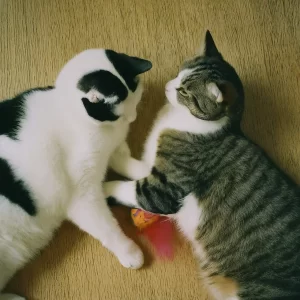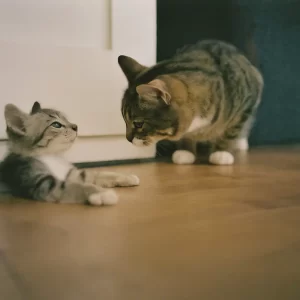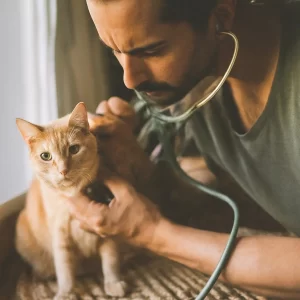Dive into the world of feline friends with vital insights on nurturing their ability to connect. Discover how to transform your home into a haven of harmony and happiness for both your cat and everyone it encounters.
Understanding the Basics of Cat Socialization
The journey of cat socialization begins with grasping its essence. It’s about more than just getting your cat to be friendly; it’s a comprehensive approach to help them become well-adjusted, confident creatures. Early stages of exposure to various stimuli, including people, pets, and environments, are critical.
Remember, each cat’s personality is unique, affecting how they respond to socialization. Patience and observation are your best tools in identifying what works for your pet.
Creating a Safe and Welcoming Environment
Your home should be a sanctuary for your cat, where exploration is encouraged within safe boundaries. Start with a quiet, comfortable space where the cat can retreat to without feeling isolated. Including hiding spots and high perches can significantly affect their sense of security.
Continuous exposure to household sounds and sights, in a controlled manner, helps your feline friend become accustomed to its living environment without feeling overwhelmed.
Introducing New People and Pets Slowly
Introductions should be gradual and under positive circumstances. For new people, have them sit and allow the cat to approach in its own time, possibly using treats as encouragement. The scent exchange method, where you swap scents between the cat and a new pet before a face-to-face meeting, can pave the way for a smoother introduction.
Always supervise initial meetings between your cat and new pets, looking out for signs of stress or aggression. If issues arise, consult with a veterinarian or a cat behaviorist for personalized advice.
The Role of Play in Social Development
Playtime is a cornerstone of cat socialization, serving as both an educational tool and a way to build trust. Interactive toys that mimic prey movements can help develop a cat’s hunting instincts in a controlled setting.
Engage in regular play sessions, encouraging interaction with various stimuli. This not only aids in physical fitness but also sharpens their social skills.
Monitoring Interactions and Making Adjustments
Observing your cat’s behavior during and after social encounters provides invaluable insights into their comfort levels. Positive reinforcement for calm and curious behaviors can reinforce good social habits.
Should your cat exhibit signs of stress or aggression, it’s important to reassess your approach. Tailoring the socialization process to your cat’s pace, not your own, ensures a positive outcome for all involved.
Efficient cat socialization opens a window to a world where your feline friend can thrive in comfort and joy. By employing these tips, you foster an environment that celebrates discovery, play, and mutual respect.
















